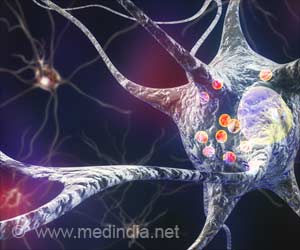Head-direction cells – internal compasses of the brain that the direction of the head as it turns.
‘Unexpected representation of three-dimensional space in the brain has been revealed by the brains GPS system’
Place cells – a mental map of the environment as we cross a specific location.
Grid cells – respond to multiple locations, thereby acting as the GPS system of the brain.
The study of grid cells and the brain’s GPS was awarded the Nobel Prize in 2014. However, the majority of the study focus has been solely on two dimensions representation in the brain. The present study for the first time found a very different 3D representation of grid cells in freely behaving bats.
Data report that the conventional two-dimensional surfaces of the grid cells were found to be activated in multiple circular areas, known as firing fields. These fields are arranged in a symmetrical hexagonal pattern – resembling millimeter graph paper that tiles the surface.
It is known that grid cells (located in the entorhinal cortex) are the first to be affected in Alzheimer’s disease – a type of dementia that consequently leads to spatial disorientation in the early course of the disease.
“We and many other researchers hypothesized that we’d see hexagonally stacked balls, like oranges in a grocery store neatly stacked in a pyramid, or any other extremely ordered three-dimensional arrangement,” says Prof. Nachum Ulanovsky of Weizmann’s Neurobiology Department, who led the study.
To test this hypothesis, the researchers, led by doctoral student Gily Ginosar, together with Staff Scientist Dr. Liora Las, recorded the activity of grid cells in bats that had small mobile devices mounted on their heads, as the bats were flying around a room the size of a large living room.
Feeding stations at different heights ensured that each bat covered most of the room’s volume in every run. Once the data started coming in, the researchers saw that grid cells did not behave as expected when responding to three-dimensional coordinates.
“The well-ordered global grid that is the hallmark of their two-dimensional activity was altogether gone,” explains Ulanovsky.
Instead, the three-dimensional firing fields of the grid cells, shaped in this case as spheres rather than circles, were packed like a box full of marbles. They were not completely disordered but were certainly less organized than the three-dimensional equivalent of a hexagonal lattice – as the new arrangement allowed the “marbles” some extra degrees of freedom. Whereas any noticeable global order was lacking, the spheres did commit to a local order wherein the distance between one sphere and its nearest neighbors remained constant.
Taken together, the surprising experimental data and theoretical model offer a new way of looking at the neural basis of three-dimensional navigation and the role that grid cells play in this cognitive process.
Source: Medindia



